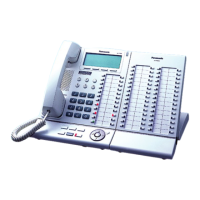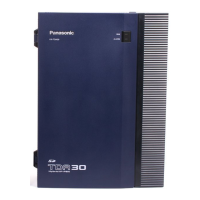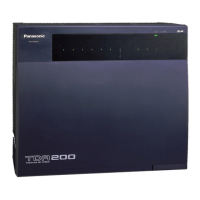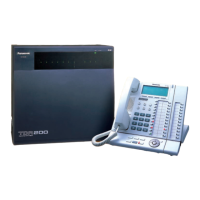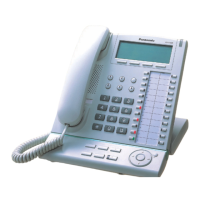1.25 Networking Features
198 Feature Guide
2. Making and Receiving TIE Line Calls
To make a call to an extension of another PBX, an extension user simply dials an extension number.
[Example]
[Programming Example: TIE Line Routing and Modification Table for PBX-1]
Explanation:
PBX-1 makes a call.
Extension 1001 of PBX-1 dials "3001".
1. PBX-1 checks its Extension Numbering Plan. "3001" is not one of its extensions.
2. PBX-1 checks its Other PBX Extension list, and finds an extension "3001".
3. PBX-1 checks its TIE Line Routing and Modification Table. Finds leading number "3". 1st priority
CO line group is "2".
4. No lines are available in this CO line group. The PBX checks for an available line in the 2nd priority
CO line group (CO line group 1), and finds an available line. No modification is programmed.
5. Sends the call down the TIE line via CO line group 1.
PBX-2 receives the call.
1. PBX-2 checks its Incoming Number Modification Table. No modification is programmed. The
number is still "3001".
2. PBX-2 checks its Extension Numbering Plan. "3001" is not one of its extensions.
3. PBX-2 checks its Other PBX Extension list, and finds an extension "3001".
4. PBX-2 checks its TIE Line Routing and Modification Table (not shown here). Finds leading number
"3". 1st priority CO line group is "8". No modification is programmed.
Calls for extn. 2XXX
Calls for extn. 3XXX
Extn. 2001
Extn. 1001
Extn. 3001
Dials "3001"
Extension
Numbering Plans
PBX-1: 1000-1999
PBX-2: 2000-2999
PBX-3: 3000-3999
CO Line Grp. 1
CO Line Grp. 8
CO Line Grp. 2
PBX-2PBX-1
PBX-3
Calls for
extn. 3XXX
Calls for extn. 2XXX
Calls for extn. 3XXX
Routing Priority
1st priority
2nd priority
Leading
No.
2
3
CO
Line
Group
1
2
CO
Line
Group
2
1
Removed
No. of
Digits
0
0
Added
No.
Dial Modification
Priority 1 Priority 2
Removed
No. of
Digits
0
0
Added
No.
Dial Modification
Location
No.
01
02

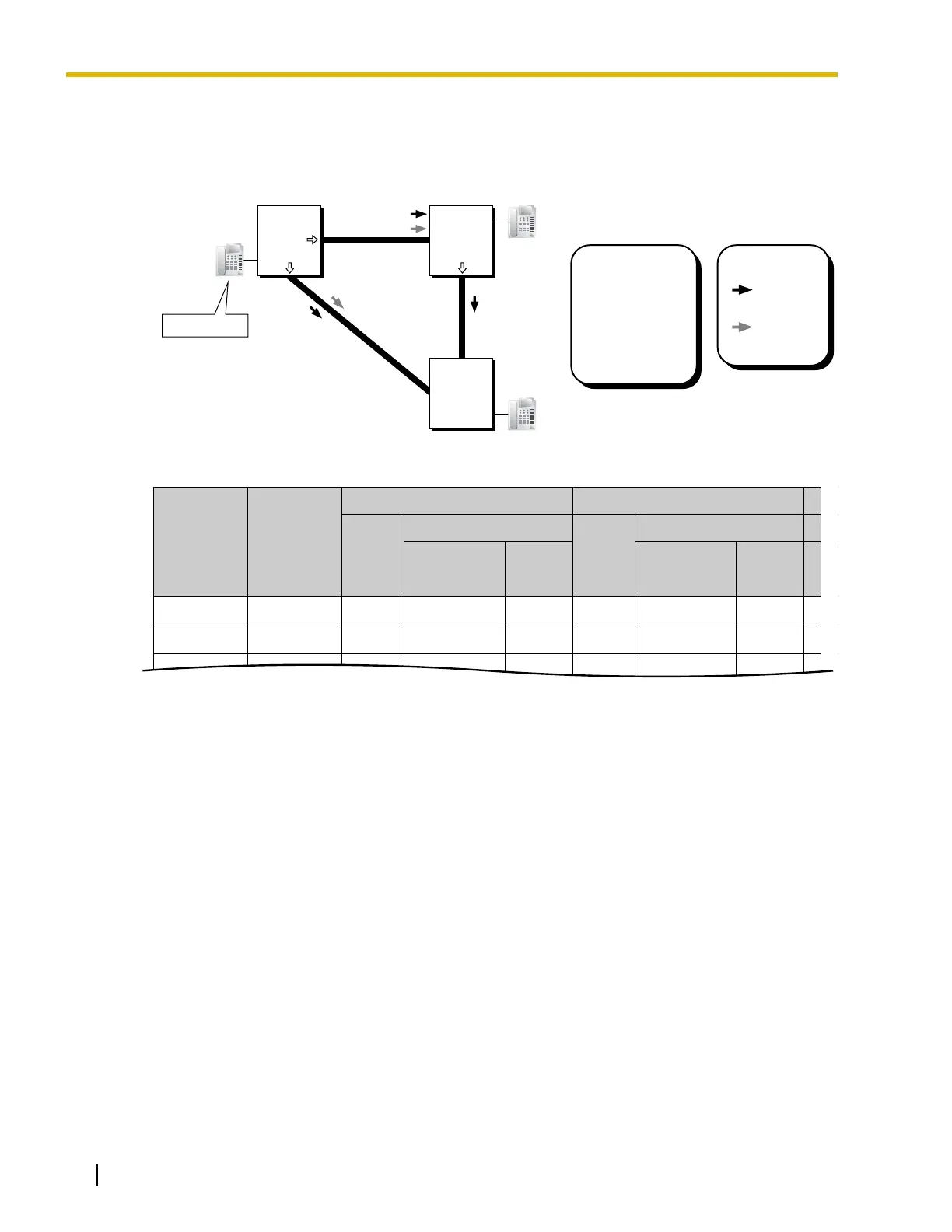